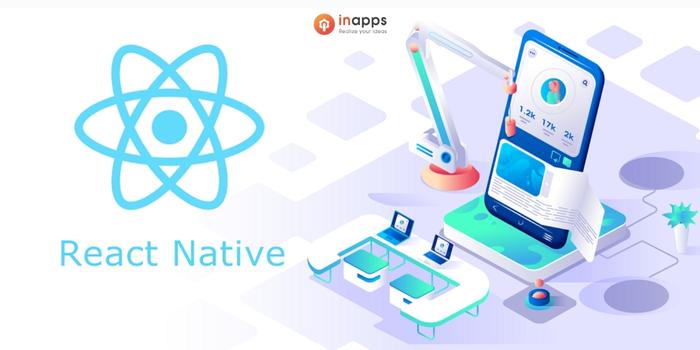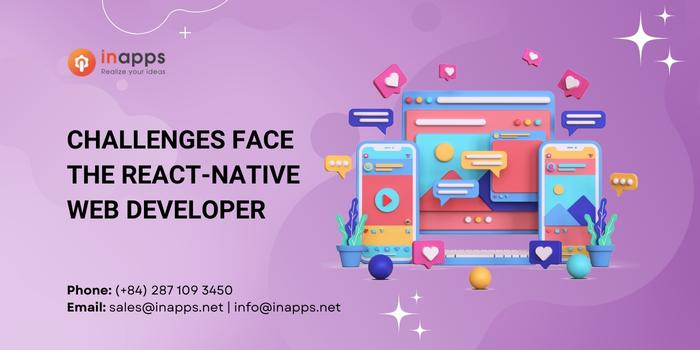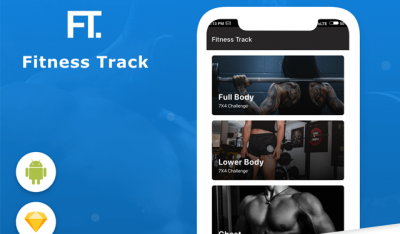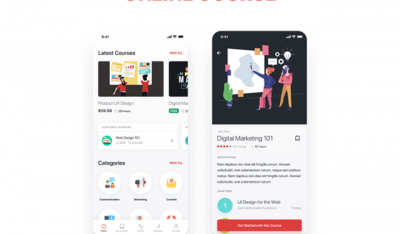React native web is one of the most amazing ideas for UI developers. It makes a longtime dream a reality: the ability to create an application that runs on both phones and browsers with just one codebase.
React native web helps us write the same React code for React and React Native.
It makes life much easier, and although it has its limitations and signs, it’s a great approach for building multi-platform apps.
The path we followed to arrive at this point is also really attractive:
- First, React appeared and changed the way we think about creating web apps.
- Secondly, React Native was released, taking all the good from React and making it accessible to iOS and Android apps. React Native basically create to work on mobile platforms, which is highly affected by how native apps are developed.
- Finally, react-native-web was created to take those React-Native applications and make them run in browsers again. It is the upgraded version of them. In react Native Web, the developer can easily build the websites.

Key Summary
- Overview: The text compares React Native and React libraries in the context of react-native-web development, highlighting compatibility issues, configuration challenges, and five common challenges faced by web developers, with insights into scalability, frameworks, UI/UX, performance, and security.
- React Native Libraries:
- Characteristics:
- Designed for React Native mobile apps but can be used in react-native-web projects if they lack native code or dependencies.
- Do not require bundling for mobile but need Webpack configuration exceptions for web bundling, as Webpack typically skips node_modules transpilation.
- Challenges:
- Libraries with native code (e.g., accessing device hardware) are incompatible with react-native-web, limiting their use.
- Performance optimization often relies on native-side rendering, which can’t be fully leveraged in web environments, impacting UI responsiveness.
- Example: A library like react-native-camera may not work in react-native-web due to native dependencies, requiring alternative web-compatible solutions.
- Characteristics:
- React Libraries:
- Characteristics:
- Built for browser-based React applications, using HTML tags for UI structure, which can break React Native mobile apps in universal (web + mobile) projects.
- Can be adapted for React Native using react-primitives, enabling cross-platform compatibility with React Native primitives.
- Challenges:
- Integrating React libraries into react-native-web requires careful configuration to ensure compatibility with mobile environments.
- Developers must ensure libraries avoid browser-specific features (e.g., DOM manipulation) to work in React Native.
- Example: A React library like react-bootstrap may need reworking via react-primitives to function in a React Native mobile app.
- Characteristics:
- Common Challenges for Web Developers:
- 1. Scalability:
- Managing load balancing across servers is complex, especially during traffic spikes.
- Solution: Adopt service-oriented architecture to distribute workloads across multiple servers, avoiding reliance on a single server.
- 2. Knowledge of Structure & Platforms:
- Frameworks (e.g., React, Angular) boost performance with pre-built libraries, APIs, and code snippets, reducing manual coding.
- Challenge: Developers must master relevant frameworks to leverage their full potential for efficient web app development.
- 3. UI/UX:
- Modern web apps must be responsive and user-friendly across devices, especially smartphones.
- Issues: Poor navigation or frustrating interfaces reduce user loyalty.
- Solution: Prioritize intuitive navigation and test UI/UX thoroughly to enhance user experience.
- 4. Performance:
- Slow web apps drive users away, harming revenue and reputation.
- Common Issues: Poorly written code, unoptimized databases, unmanaged data growth, traffic spikes, poor load distribution, default configurations, and problematic third-party services.
- Solution: Optimize code, databases, and infrastructure, and use performance monitoring tools.
- 5. Security:
- Security must be integrated throughout the Software Development Life Cycle (SDLC).
- Risks: Denial-of-service attacks, data breaches, database malfunctions, and unauthorized access.
- Solution: Implement robust security measures like encryption, access controls, and regular audits.
- 1. Scalability:
- Benefits:
- React Native Libraries: Enable code reuse across mobile and web (if web-compatible), speeding up development for universal apps.
- React Libraries: Offer rich browser-based UI components, adaptable for mobile with tools like react-primitives.
- Cost Efficiency: Offshore development in Vietnam ($20-$50/hour via InApps Technology) reduces costs for React Native and web projects by 20-40% compared to U.S./EU rates ($80-$150/hour).
- Challenges:
- Compatibility: Native dependencies in React Native libraries and HTML reliance in React libraries complicate universal app development.
- Configuration: Webpack setup for react-native-web requires custom exceptions, adding complexity.
- Developer Expertise: Mastering frameworks, scalability, and security demands continuous learning.
- Use Cases:
- Building universal apps (web + mobile) with react-native-web, using compatible libraries for shared codebases.
- Adapting browser-based React libraries for mobile apps via react-primitives.
- Addressing scalability and performance in high-traffic web applications (e.g., e-commerce, social platforms).
- InApps Technology’s Role:
- Provides expertise in React Native and react-native-web development, navigating library compatibility and Webpack configurations.
- Leverages Vietnam’s 200,000+ IT professionals, offering cost-effective rates ($20-$50/hour) for scalable, secure web and mobile apps.
- Supports Agile workflows with tools like Jira and Slack for efficient project delivery.
- Recommendations:
- Verify React Native library compatibility with react-native-web, avoiding those with native dependencies.
- Use react-primitives to adapt React libraries for universal apps, ensuring cross-platform functionality.
- Optimize Webpack configurations to include React Native libraries in web bundling.
- Partner with InApps Technology for expert React Native and web development, leveraging Vietnam’s skilled developers to overcome scalability, performance, and security challenges cost-effectively.
React Native Web – UI language
The first reason is that React Native Web uses a subset of React to generate the UI (User Interface). If we want a code that runs on both mobile and web, we should stick with the more restrictive one; in this case, it’s React Native.
As long as we don’t use modules that require some native functionality, a React Native app should work in browsers through react-native-web out of the box.
The second reason is that React Native Web is a pure UI language. It defines some base components that define UI primitives, and those are thought to be independent of the platform that runs them. The libraries we can use to develop a react-native-web app.
React Native libraries
- On the one hand, we have React Native libraries. We should be able to take these libraries and plug them into our react-native-web project with no issue (unless they run native code or have native dependencies).
- Unfortunately, performance used to be the main focus among React Native Web developers and the developers can achieve the best UI performance in the website when rendering is taken to the native side.
- In this way, the developer can make characters in the JavaScript thread without changing the responsiveness of the interface. Those libraries with native code can’t be used in a react-native-web project. As well as, React Native libraries don’t need to be bundled to work for mobile.
- So we need to add exceptions into our web pack’s module configuration in order to take them into the bundling. React Native libraries don’t need to be bundled to work for mobile, so we need to add exceptions into our web pack’s module configuration in order to take them into the bundling.

React libraries
- On the other hand, the React libraries, which generally thought to work in browsers. They make use of HTML tags to structure the UI; thus, if we use them in our universal app, they will break the mobile version.
- If you are a React library developer, and you think your library would make sense for mobile applications, you should know it’s possible to make it work in React Native as well by using the same primitives as React Native through react-primitives.
- Even when we find a React Native library that’s compatible with web, the process of making it work in our web app is not straightforward. In order to build our web apps, we use web pack as the bundler. And it usually doesn’t transpile the files inside our node_modules folder.
The struggle is a part of everyone’s life and it is all on the people that how they handle their struggle and face the challenges. It is on the human nature that how positively they can handle their challenges and how they fight with their struggling life. As a web developer, there are so many things that should be noted and some challenges that are given below.
Disadvantages of React Native Faced by Web Developer
5 common challenges faced by web developers:

1. Scalability
- Scalability is a difficult thing for web developers to manage. It is load balancing between the servers, hence when the load increases when more traffic on the page. And the additional servers that were added to balance it.
- Also all the load should not be thrown on a single server instead of the software should be design in such a way that it can work on multiple servers. Service-oriented architecture helps developers in managing and improving scalability.
2. Knowledge of Structure & Platforms
- Frameworks are boost performance, offer libraries of coding and extend abilities. So, the developers need not do hand-coding web applications from the ground up.
- Frameworks offer features like models, APIs, snippets of code and other elements to develop effective web applications.
3. UI/UX
- In the era of smartphones, the web developer expected to develop UI/UX that responsive and user-friendly. If the web applications frustrate users, then it is difficult to maintain the customer’s loyalty on your website.
- Secondly, Website navigation another part often neglected by developers. Intuitive navigation creates a better user experience for the website visitor.
4. Performance
- Slow web applications are a failure; as an outcome, clients escape your website, thus damaging your revenue as well as reputation.
- Some of the performance issues developers face are Poorly written code, Un-Optimized Databases, Unmanaged Growth of data, Traffic spikes, Poor load distribution, Default configuration, Troublesome third-party services, etc.
5. Security
- Web developers need to consider security at every stage of SDLC (software development life cycle). There are many things to consider when it comes to web application security.
- Such as denial of service attacks, the protection of user data, database malfunctioning, unofficial access to restricted parts of the website, etc.
Topics you must read to know more about React Native Web:
Wrapping Up
The challenges that are faced by the developers are like the struggles that every React Native Developer has to face, except with happiness. As well as the developer who positively takes these struggles are the top developers.
As a developer, you should always believe that nothing is impossible whether it is coding or assigning the whole project on your own. According to the market, React-Native-Web is the most demanding and upgraded version of React and React Native.
The overall thing that should be kept in every developer’s mind is that Web developers are responsible for far more than just building web pages. It is also good to form your career as a web developer, freelancer, or remote worker for the company. As the React Native Web is the exclusive and best way to create any website, the developer’s demand is the same.
It is like a trend that new technology makes more demand in the market. If you need to find the best developers and top coders of React Native web, feel free to contact InApps. We will provide you with high-productivity dedicated developers.
- 80% of developers are good at English communication
- 90% of developers have +5 years of experience
- High troubleshooting skills and fast problem-solving
Let’s create the next big thing together!
Coming together is a beginning. Keeping together is progress. Working together is success.
















